We went to Maine to check out Yeti poop. True story.
Does this have anything to do with the New Year? Nope, but if you like, we can say that the search for Mothman, the Jersey Devil or the longest anaconda in the world is as good a way to begin 2025 as anything.
For months and months now, Little Bean and I have been eyeing the International Cryptozoology Museum (ICM) up Portland way, and we decided as a family to head up there for my daughter’s birthday. Even the lady of the house came, putting aside her curious suspicions that the poop was not real Yeti poop. We’re very proud of her!
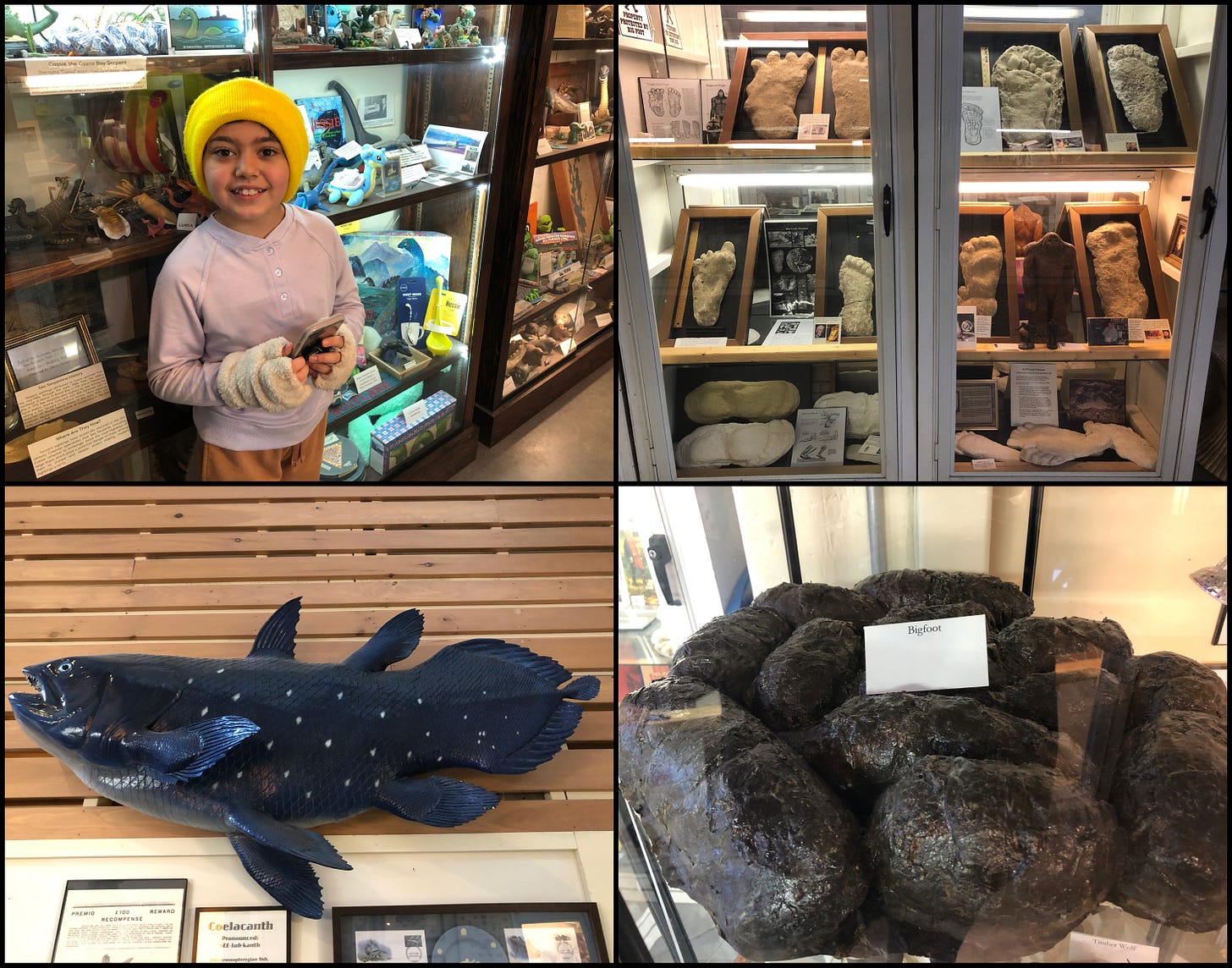
Back when I was Little Bean’s age, my father took me to a documentary about Bigfoot and the Loch Ness Monster and U.F.O.’s. For the life of me I can’t remember what it was called, but it showed the most famous Bigfoot film of all, the Patterson / Gimlin ‘Bigfoot Walk’ captured in 1967 in Northern California.
You’ve seen it. We’ve all seen it. Same with the famous Loch Ness Monster image published in 1934 in the Daily Mail.
Supposedly that image has been debunked, but blah blah blah my fingers are in my ears and I can’t hear you!
A few years ago, Little Bean picked up on the Loch Ness Monster through a children’s book called Nessie that reimagined the beast into a more kid-friendly children's version where Nessie was lovable but just misunderstood. She loved Nessie so much that she named the set of rocks in Oak Park in Manchester Nessie’s Humps and we included them in our NH Rocks series of field guides.
The ICM is the brainchild of Loren Coleman, an academic and leading authority on Bigfoot and other fantastical beasts. Founded in 2003, the museum has moved around a bit, but currently finds itself tucked next to a brewery, behind the Portland train station and across the road from the Maine Children’s Museum.
“Oh my gosh,” were the first words out of Little Bean’s mouth upon entering the absolutely jam-packed museum. The lady of the house muttered the same thing, curiously, though I suspect the meanings were different.
The place is loaded from floor to ceiling with memorabilia, every shelf a mish-mash of museum quality items right next to the most delightful tchotchkes. Here we found a whole display on the Creature from the Black Lagoon directly across from one of the museum’s most famous exhibits, P.T. Barnum’s FeeJee Mermaid.
(Side-note: I’m going to write a separate essay about the FeeJee Mermaid because it’s a fascinating and strange item indeed!)
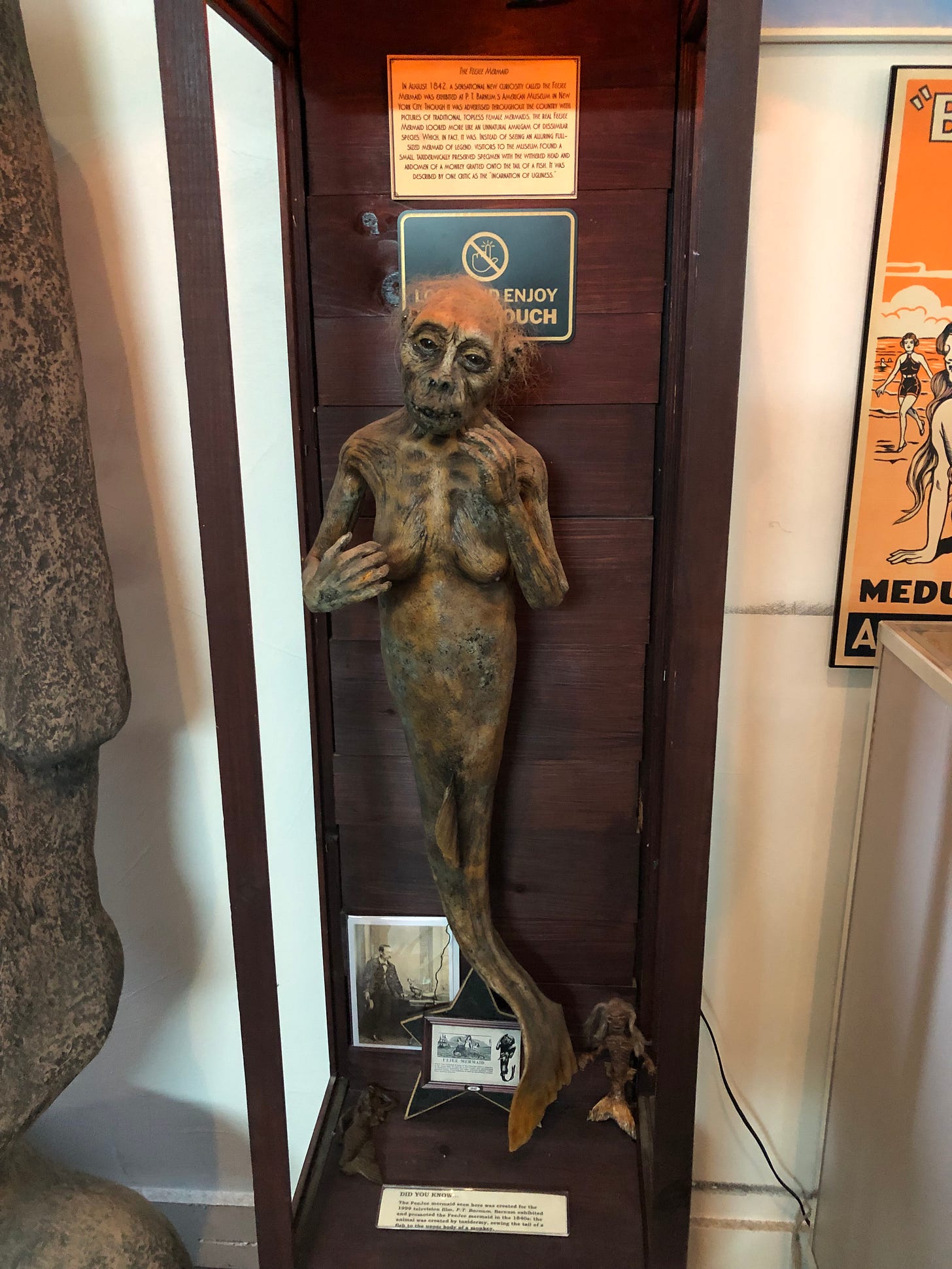
We walked past Easter Island models, an exhibit dedicated to the Dodo bird and a giant fiberglass Coelacanth fish which the museum claims is the only life-size exact model of the first 1938 specimen displayed in North America.
There were many, many models, pictures, paintings and artifacts dedicated to Bigfoot and Nessie, perhaps the two most famous cryptids. And alas, there was no yeti poop that we could find, though there was the famous yeti skull, an artifact pulled out of a region in Nepal called Pangboche, a place where my wife and I had trekked!
I’d add that there WAS Bigfoot poop. (Ok, it appeared, perhaps, to be a model, but I’d direct your attention to me putting my fingers in my ears.) There are also dozens and dozens of Bigfoot footprint casts.
Two items of very particular interest to Little Bean turned out to be surprises. First up, a small display of a Pokémon character with a real-life crypto connection. The other was the famous taxidermy fox Cerberus, or three-headed fox.
“I’m really interested in him, daddy,” she said over and over. The plaque by the fox listed it as the winner of a ‘Rogue Taxidermy’ award. Turns out, she rides a Cerberus in one of her favorite video games.
And so, where does this all lead? At its face, of course, Cryptozoology offers the celebration of the monstrous. There’s still so much unknown, so many fears, so much uncertainty in real life that searching for a prehistoric water lizard provides a safe connection to that unknown, in particular if that creature is actually just shy or harmless, despite its facade. If only the same could be said about some real creatures.
Then there’s the draw of secret knowledge - seeing or hearing or knowing about something rare and therefore beautiful.
And finally, believe it or not, there is a connection between cryptid-seekers and environmental conservation. Preservation and information is the thread that runs through the two.
In the end, who knows? Even the misses appeared to have enjoyed herself despite what she called the ‘kitsch factor.’ I know plenty of folks who will say that just because we can’t prove it, doesn’t mean it isn’t real.
So, we’ll keep our eyes open for the shadows through the trees and for the strange ripples in the lakes. But mostly, I hope Little Bean stays curious and keeps asking questions. After all, one doesn’t run across a three-headed fox every day.
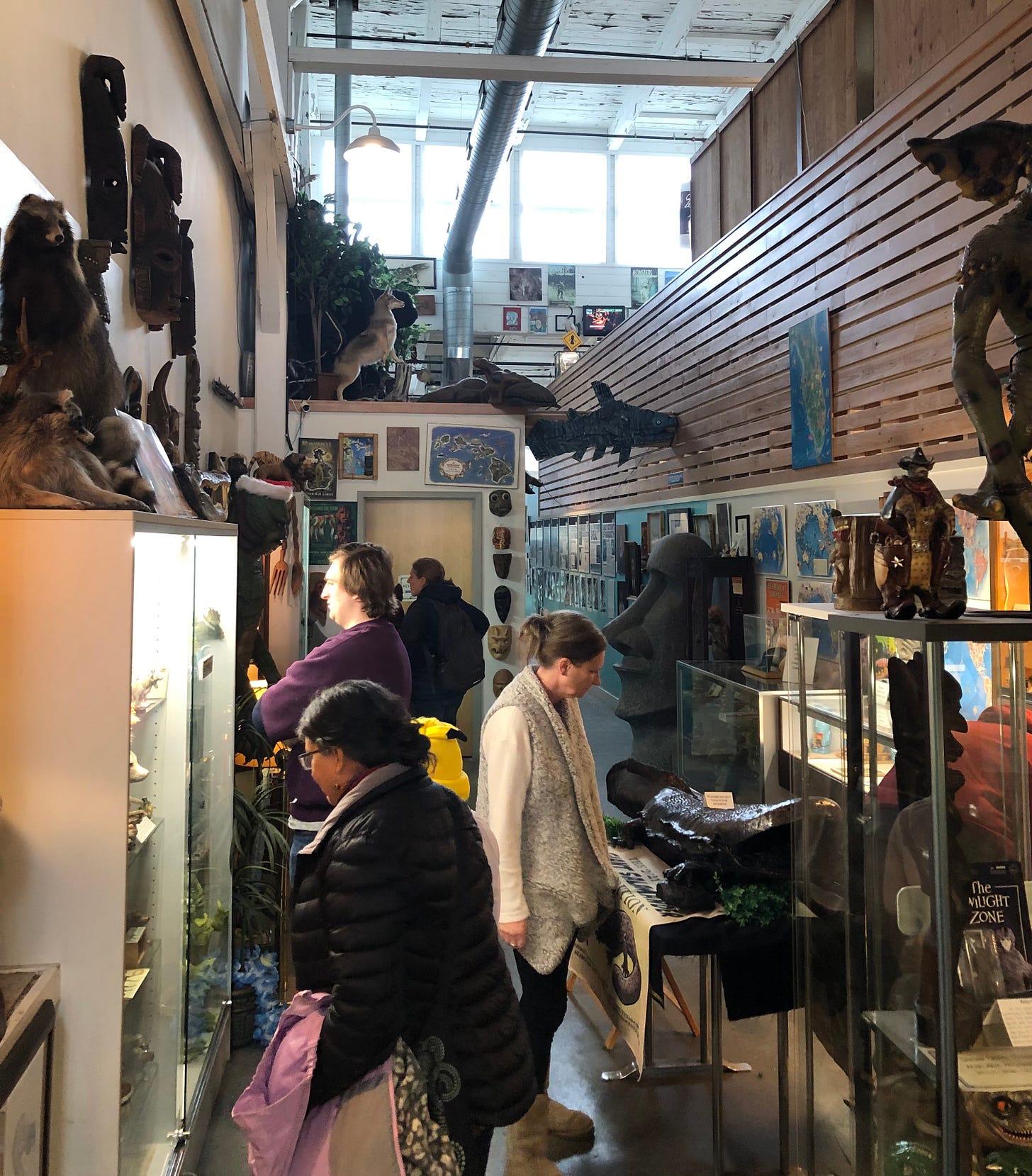

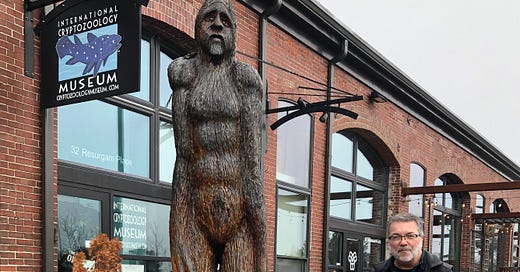



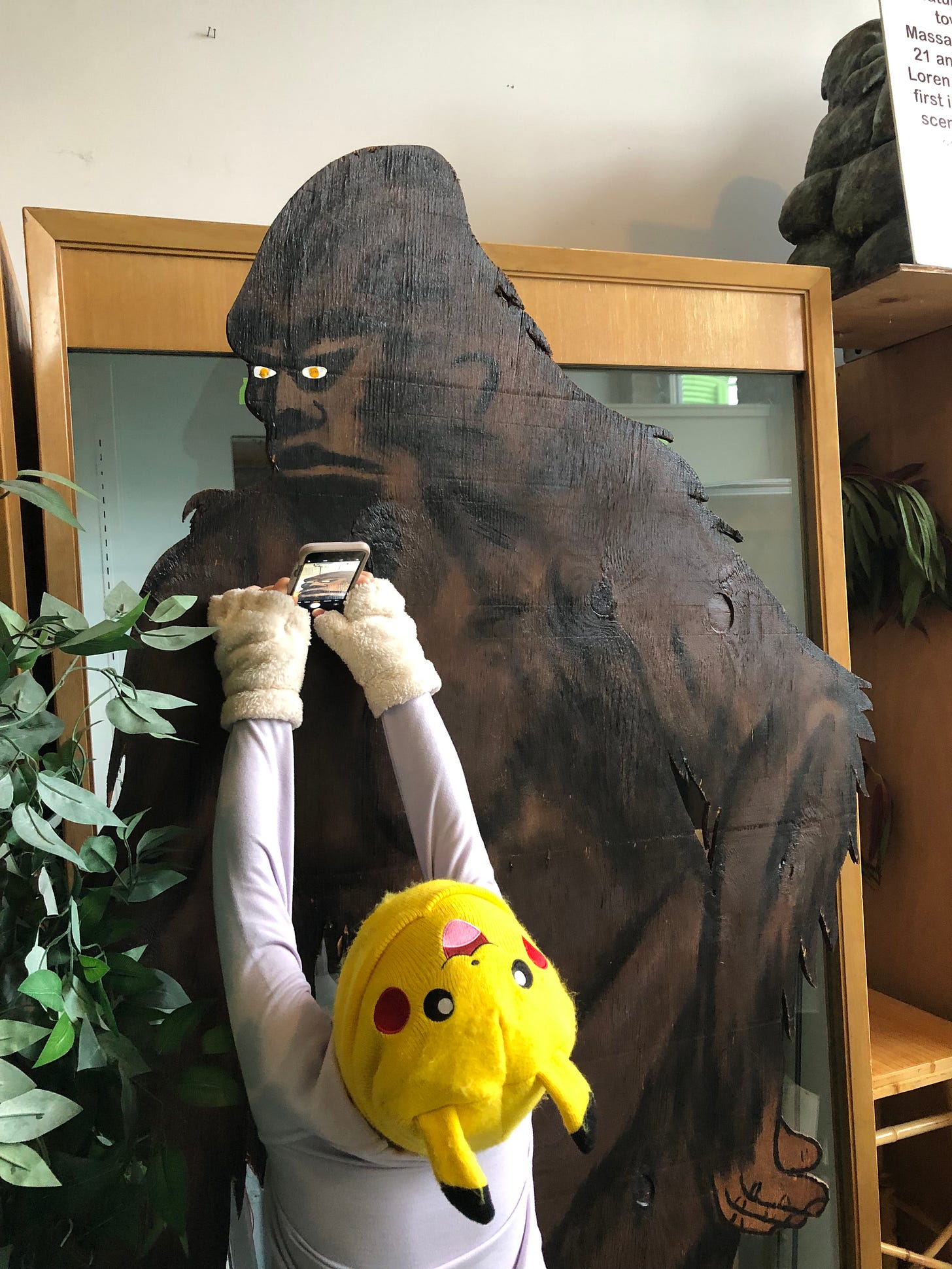
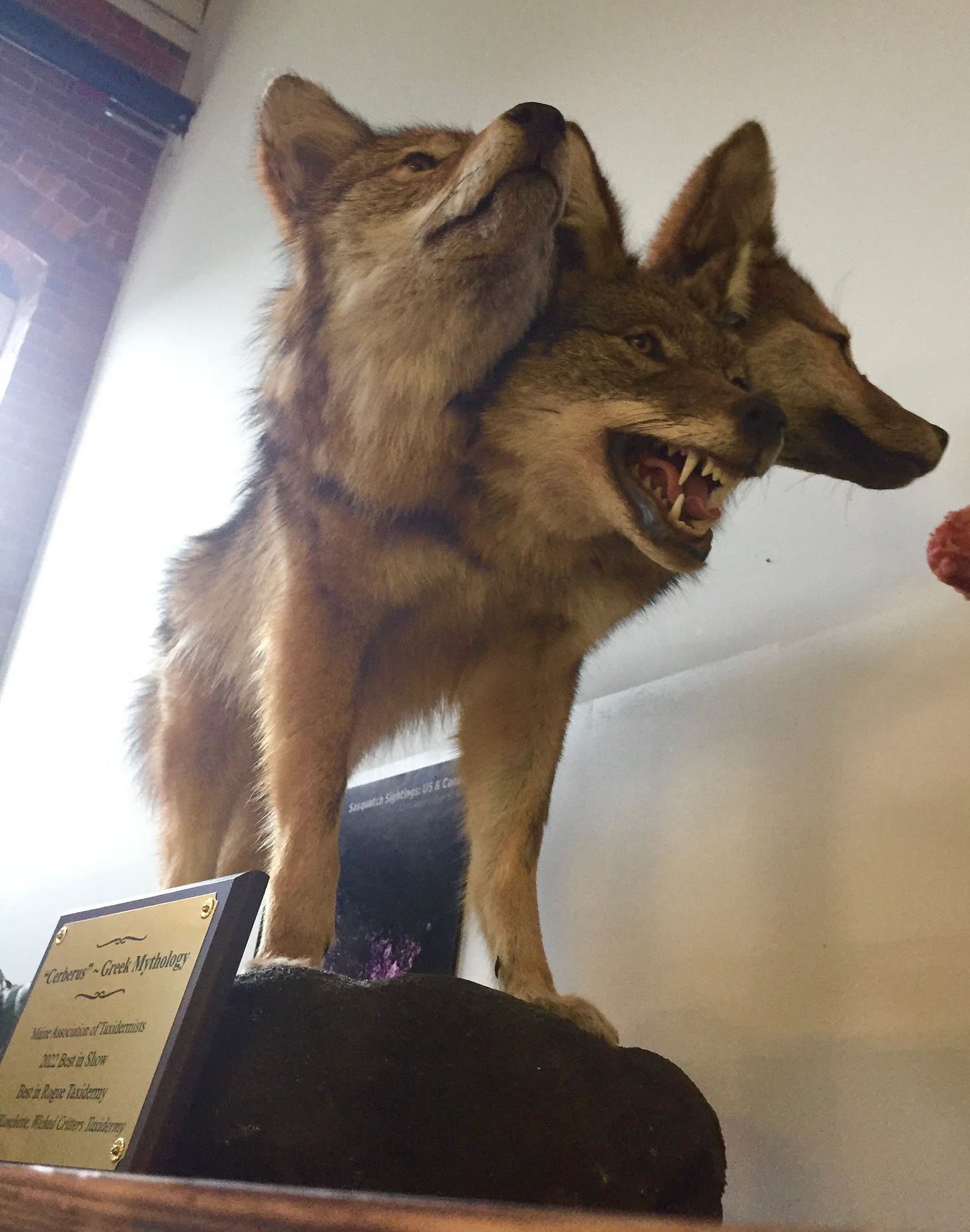
Uh oh. My son-in-law would LOVE this place. We're going to have to take him next time he and our daughter come to visit.
We visited that museum a few years ago. It's wild! And a little overwhelming. The combination of 'artifacts' and 'kitsch', with many of the collections in regular household furniture (like china cabinets) was amusing. I imagined the founder having these cabinets of curiosities filling the house, and his wife insisting that he 'get this crap outta here!'.